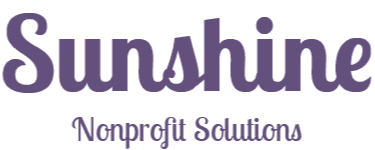
Employee Engagement: The Foundation for a Trauma-Informed Organization

Trauma-informed organizations are built on the foundation of an engaged and healthy workforce, with strong leadership at the helm. This foundation is critical, particularly during periods of uncertainty or acute crisis. Creating and sustaining a trauma-informed organization requires a comprehensive, organization-wide commitment, detailed planning, training, and investment in both time and resources.
This guide outlines key strategies to strengthen your workforce and build a trauma-informed organization, based on both successes and challenges observed in practice. The transformation process involves a holistic approach, grounded in supporting employees and fostering leadership engagement.
Three Strategies for Strengthening Your Workforce
- Ensure Leaders Are Fully Engaged
- Support Employees' Health and Well-Being
- Engage Employees at Every Level
By implementing these strategies, organizations can align with the six guiding principles of trauma-informed work, as described by Alameda County. These principles include:
- Understanding trauma
- Promoting safety and stability
- Demonstrating cultural humility and responsiveness
- Cultivating compassion and dependability
- Prioritizing collaboration and empowerment
- Fostering resilience and recovery
Below, we break down these strategies for practical implementation.
Engage Your Leaders: The Foundation of Trauma-Informed Environments
Leaders play a critical role in fostering a trauma-informed environment. Fully engaged leaders prioritize a core belief in caring for their teams, moving beyond mere actions or words to demonstrate a commitment to their employees' overall well-being. As Maya Angelou wisely observed: "At the end of the day people won't remember what you said or did; they will remember how you made them feel."
Key Behaviors of Engaged Leaders
- Proactive Problem-Solving: Focus on solutions and outcomes rather than obstacles.
- Empowering Teams: Encourage dialogue, empower employees, and develop their skills to inspire confidence and collaboration.
- Managing Calmly in Crisis: Remain composed and informed during uncertain times by staying updated with trusted sources (e.g., CDC for pandemic-related issues). Calm communication fosters trust when guiding employees through challenges.
Equally important is trusting employees. High-performance workplaces prioritize outcomes over rigid schedules and trust their teams to manage responsibilities effectively. This approach inspires productivity and encourages healthier work-life balance, benefiting both individuals and the organization.
Promoting Health and Well-Being for Teams and Leaders
Healthy organizations start with healthy leaders who model effective self-care. Strong leadership isn't about long hours or burnout—it's about consistently prioritizing physical and mental health. Simple habits can set the tone for an organization-wide wellness culture.
Practical Approaches to Encouraging Wellness
- Begin with small, incremental changes or "tiny habits" toward healthier behaviors (resources like Tiny Habits can help).
- Introduce on-site wellness initiatives (e.g., lunchtime meditation, after-hours fitness classes like yoga or Zumba).
- Replace office pastries with healthier options like fresh fruit.
- Schedule walking meetings or encourage short, active breaks.
- Offer gym memberships or wellness stipends.
When employees see leaders prioritize health, they're more likely to adopt these practices, creating a resilient and engaged workforce.
Enhancing Employee Engagement At Every Level
Engaged employees are passionate about their roles, deeply connected to their organization's mission, and willing to go above and beyond. According to Gallup, organizations with highly engaged workforces experience:
- Lower absenteeism
- Decreased turnover
- Higher productivity and profitability
For non-profits, engagement translates to improved client outcomes and stronger organizational impact.
Key Approaches to Foster Engagement
- Set Clear Expectations: Outline responsibilities and define success for each role, focusing on results rather than rigid directions.
- Provide Proper Resources: Ensure employees have necessary tools (e.g., technology for remote work)—especially in resource-limited settings.
- Leverage Strengths: Identify and utilize individual talents (tools like CliftonStrengths or Values in Action surveys can help).
- Recognition and Feedback: Offer meaningful recognition that ties achievements to organizational goals.
- Foster Relationships: Facilitate connections through collaborative projects and shared goals.
Engaged employees thrive when they see a clear link between their daily tasks and the organization's broader mission. Leaders can reinforce this connection through regular communication, impact stories, and ensuring employees feel valued.
Building Trauma-Informed Organizations Through Empowerment
At the heart of trauma-informed care lies empowerment—for both clients and employees. Empowering staff starts with listening to their perspectives, even when they differ from leadership. Soliciting feedback, engaging in authentic conversations, and acting on employee input fosters inclusion and trust.
Non-profits often face engagement challenges due to disconnects between daily tasks and organizational mission. Consistently reinforcing this connection is critical.
Actionable Steps to Foster Engagement and Empowerment
- Health and Wellness Plans: Implement strategies like Eat, Move, Sleep or structured wellness programs.
- Support Leadership Development: Use resources from sources like Harvard Business Review.
- Utilize Gallup's Research: Leverage tools like the Q12 engagement survey to assess and enhance satisfaction.
- Encourage Development Opportunities: Offer project leadership roles, conference attendance, or regional networking.
A Call to Action: Continued Engagement
Trauma-informed organizations thrive with healthy, engaged leaders and employees. By adopting these strategies, you can create a culture that supports staff and delivers impactful community outcomes.
Ready to build a more engaged workforce? Schedule a free consultation with Sunshine Nonprofit Solutions to implement trauma-informed principles where your team and mission can flourish.
Reach Out Today
Share your thoughts or requests to help us support your nonprofit's mission.
Let's collaborate on data-driven strategies for impactful growth and community benefit. Reach out to us now.
Contact Us
Office location
8948 Sw 224Th Terrace, Cutler Bay, Florida, 33190Give us a call
(407) 304-7689Send us an email
[email protected]